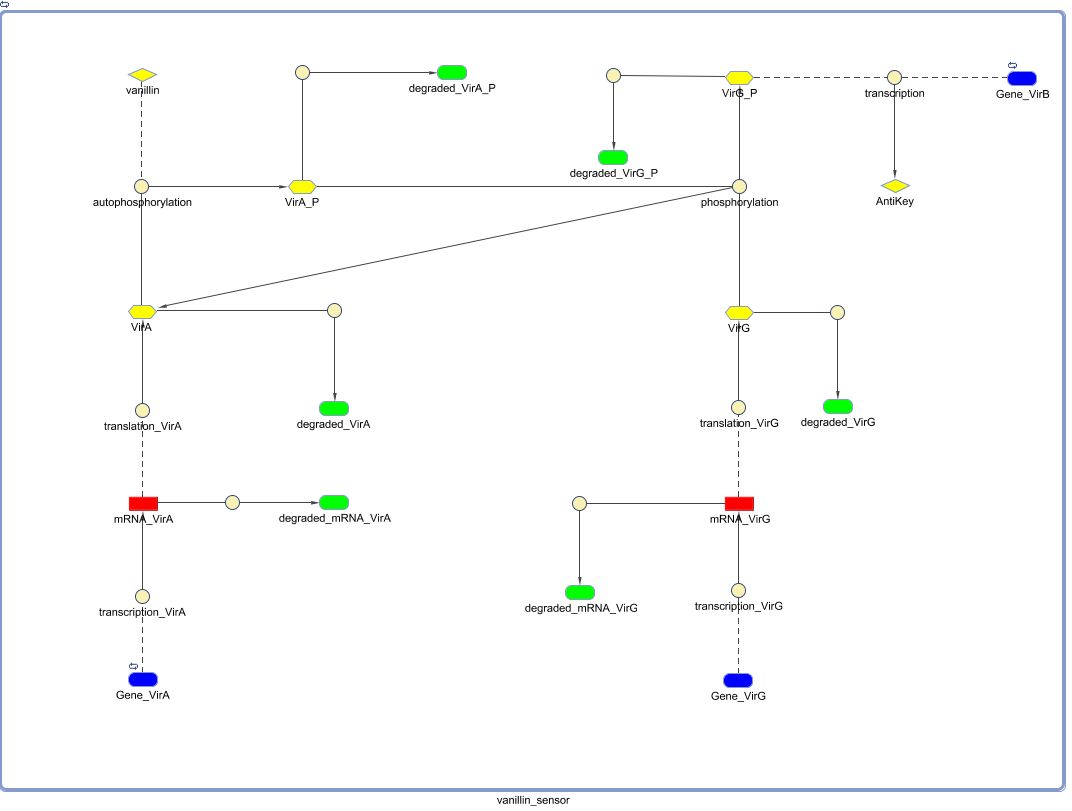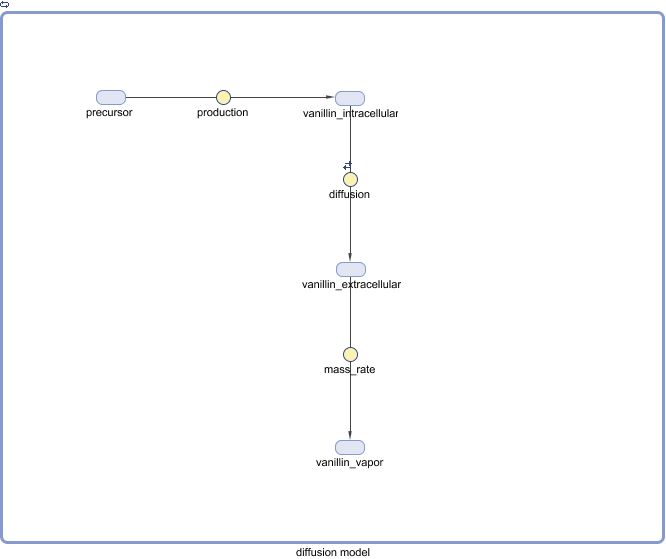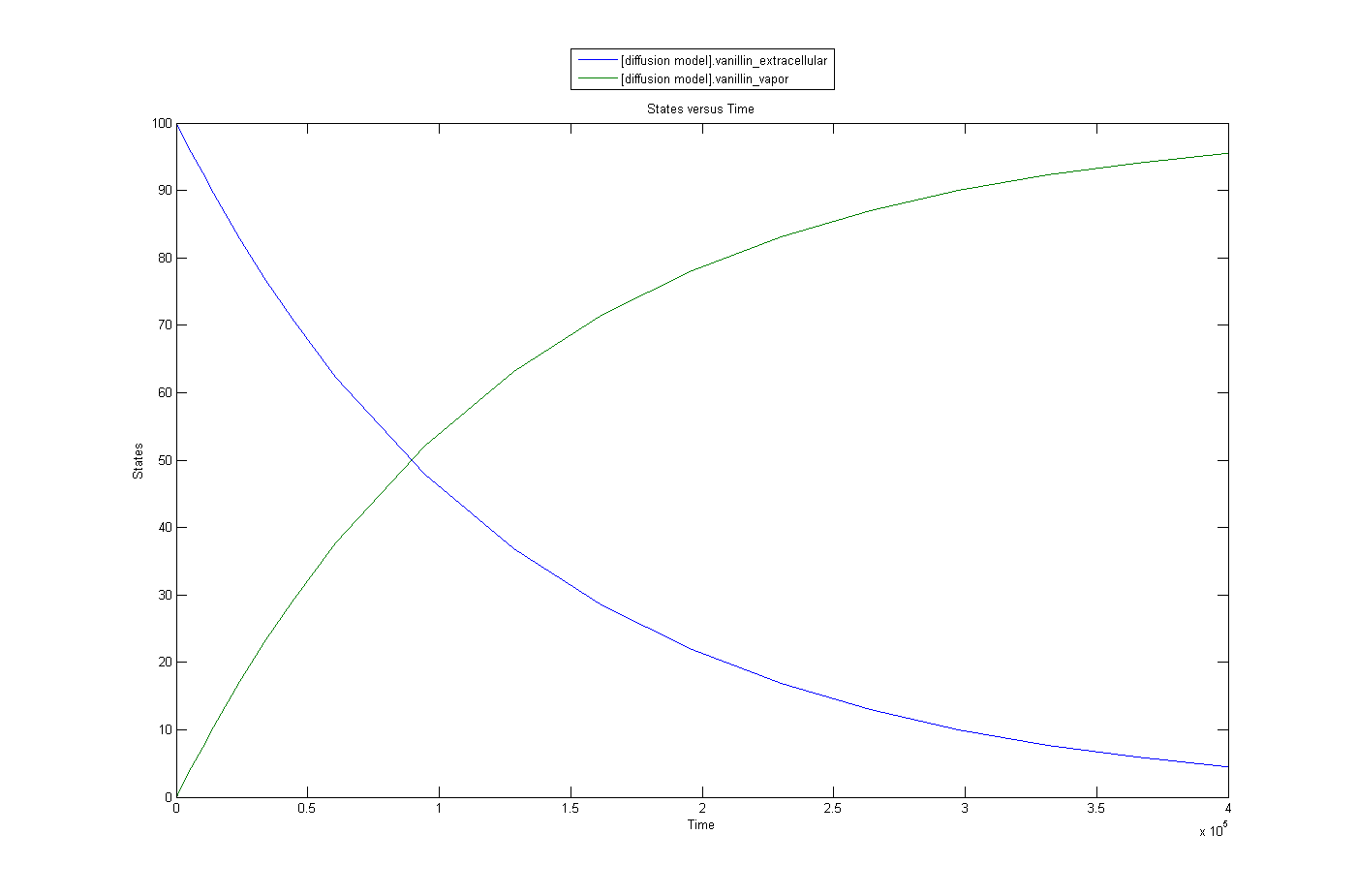Team:KULeuven/Modeling/Vanillin Receptor
From 2009.igem.org
Contents |
Vanillin Sensor
Overview
The vanillin receptor senses the vanillin concentration outside the cell. This information is needed to create the feedback loop to control vanillin synthesis. Under influence of vanillin, Vir A gets autophosphorylated and phosphorylates on its turn Vir G. Vir G then triggers the transcription of Anti-key.
Biological Model
Mathematical Model
Simulation
Vanillin diffusion
Because VirA senses the vanillin concentration in the cytoplasm, it's important to estimate the diffusion of vanillin over the cell membrane. Also because vanillin is not actively removed from the extracellular medium, the rate of evaporation of vanillin is an important figure if we want to regulate the concentration of vanillin in the extracellular medium. A detailed analysis can be found in following document. vanillin_sensing
The most important figures are that the time to reach steady state between the concentration of the inter and extracellular concentration of vanillin in the order of 10 ms, the half-life through evaporation of vanillin in water is 20 hours.
An equivalent model (single cell) of vanillin in the aqueous medium and evaporation was conducted.
Following simulation shows the time-scale of evaporation of vanillin out of the lb(aqueous) medium, the slow evaporation rate of vanillin is not surprising considering its use in the perfume industries as an aroma in the ground note.
If this evaporation rate would show to slow, several active techniques exists to speed the process of removing the vanillin from the extracellular medium.
 "
"












